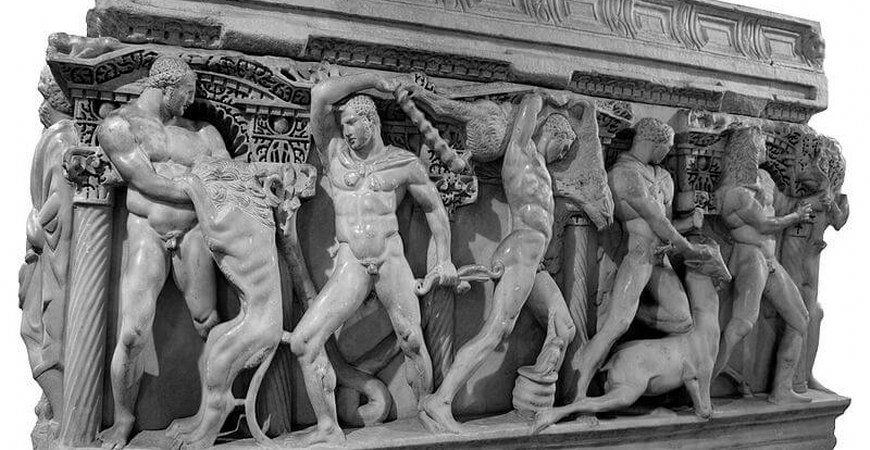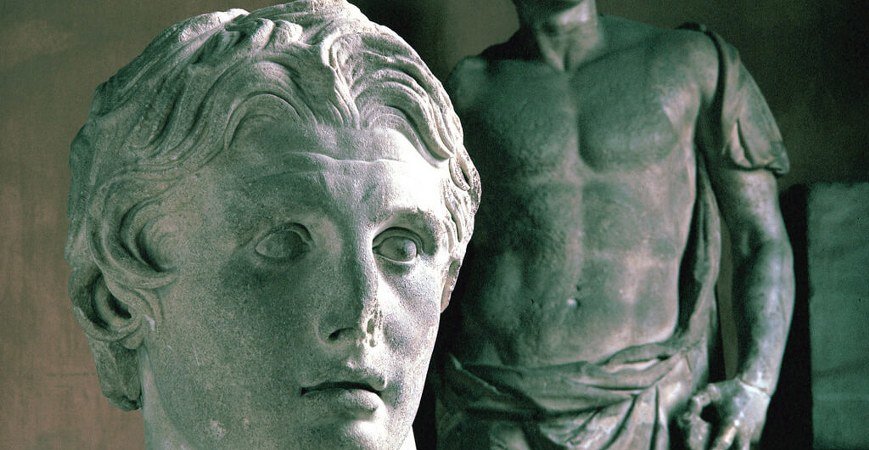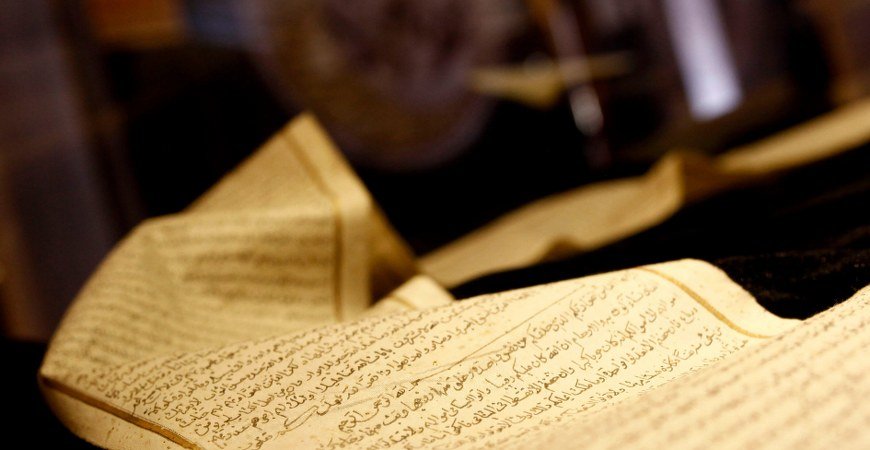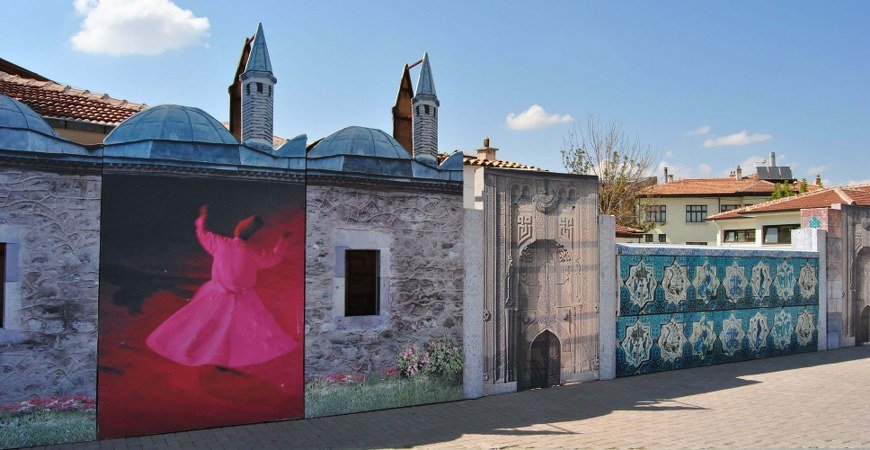Author: erkan

The Heracles Sarcophagus In Konya – Chapter 1
The Heracles Sarcophagus In Konya – Chapter 1,
In July 1958 the Director of Konya Museum was showing a group of foreign visitors around the museum one afternoon. The news came that a Konya lawyer was on the telephone and wanted to discuss a very important matter. The director apologized and ran to the telephone. The old lawyer began to talk excitedly. He said that he had been to Beysehir that morning to attend a trial. Afterward, he had caught a bus back to Konya, but 60 km. before reaching the city the bus had a puncture, and the lawyer got off together with the other passengers. A little way ahead a villager was digging a trench. He went over and greeted him. Just then the villager’s spade struck against a stone. Thinking it was an ordinary stone he felt it with his hand and brushed the soil off the top, revealing a carved stone of milk white marble. Our friend asked the man to stop digging in the case of breaking whatever was buried here, and jumping into the meter deep hole they began to clear the soil away together. The upper surface of a marble cover could be seen in all its beauty but at that moment the bus was ready to start off. “Don’t dig anymore. Tomorrow I’ll bring the museum director to see it,” he said to the village and he got on the bus and returned to Konya. The news was very interesting. The museum director puts down the telephone and got in a jeep. The hole which the village had dug was four or five meters from the side of the road, and at a meter deep could be seen the cover of a marble sarcophagus. However, to dig it out would take two or three days work. The director had two gendarmes sent from Beysehir and set them to guard this new find while he got together the equipment and laborers ready to start work the following day. When the sarcophagus was finally dug out it was seen that this beautifully carved sarcophagus ranked among the world’s finest, a masterpiece of art perhaps unequaled among those cf its period. This 7 – 8-ton sarcophagus cut from a single piece of marble was lifted onto a Caterpillar wheeled vehicle using modern winches supplied by the Second Army in Konya. This convoy entered Konya early in the afternoon watched by thousands of people, who had heard the news on the radio, and the sarcophagus was placed in Konya Archaeological Museum.
You will find more details about The Heracles Sarcophagus In Konya Turkey in Chapter 2.

Land of Fairy Chimneys At Goreme and Urgup Cappadocia
Land of Fairy Chimneys At Goreme and Urgup Cappadocia,
Fairy Chimneys At Goreme
The lava that came out of Mount Erciyes during its eruptions thousands of years ago covers an area of approximately 4000 km2. After the volcano became extinct the region was exposed for centuries to extensive erosion through wind, snow, and rain. In this process, owing to the peculiar composition of the soil, certain parts and ingredients dissolved or were eroded much faster leaving behind the strange shapes we call “fairy chimneys” today. The advance of the Arab armies caused the Byzantine population of Derinkuyu to come and settle at Goreme, which was earlier called GOremi. This name was supposed to mean “you cannot see”. It was then changed into Korama and then finally into Goreme. The place lies between Nevsehir (17 km.) and Urgup (10 km.) St. Paul considered Goreme as the most suitable place to train missionaries. Though the name covered a larger area, now it is applied only to one valley with a variety of “fairy chimneys” and rock churches, which deserve the great interest shown in them. Goreme, which was one of the greatest centers of Christianity from the VI to the IX century, contains almost 400 churches. The majority of these churches are to be found at Zelve, Mustafa Paa, Avcilar, Ughisar, Ortahisar, and Cavusin village. All these villages lie very close to each other and are essentially part of Goreme. The churches in Goreme alone are Tokali Church, Carikli Church, Karanlik Church, Meryem Ana Church (Church of the Virgin Mary), Elmali Church, Yilanli Church and Barbara Church. The most varied ranges of fairy chimneys are to be seen at Zelve.
Urgup
It is a town in the Nevsehir province and lies 22km. to the east of Nevsehir, on the Kayseri highway 7 km. to Goreme. It was Urgup that acted as a pioneer to make this province known to the world. Through the enterprising spirit of its mayor, Ali Baran NumanoOlu and its population, hotels with wine on tap in the rooms, campings, and pensions were built. Owing to the hospitality of its people and the entertainment provided (for example folk dances by dancing groups every evening) most tourists prefer to spend the night in Urgup.
Besides its historical wealth, the town is noted for its wines, carpets, and handicrafts. The sunset in the Cappadocian valleys from the top of “fairy chimneys” is an unforgettable sight.

Head Of Alexander in Istanbul Archaeological Museum – Chapter 2
Head Of Alexander in Istanbul Archaeological Museum – Chapter 2,
From Ephesus, he went to Miletus and from there to Bodrum. In seven months he had the shores of the Aegean under his control. He went on to Antalya and took the cities of Perge and Side. From here he turned north to Burdur and Afyon and on a spring day arrived at King Midas’ capital of Gordion near Polatli. In the temple was a knot around the yoke of an ox cart. According to legend, whoever could undo this knot would become ruler of Asia. Alexander looked at the knot, realized that it could not be undone, pulled out his sword and cut through it. From Gordion he marched to Ankara and from there to the Taurus Mountains. He was in search of the Persian King Darius. He eventually found him near Toprakkale in the autumn of 333 iBC. It was the first time that there two armies had met and they fought desperately. Alexander immediately attacked Darius, but the darkness saved Darius from being captured. Abandoning his treasure in his tent he escaped, and Alexander ate his dinner in Darius’s tent. He distributed the treasure to his army, keeping a small gold box for himself in which he put the copy of the Iliad which he had hung round his neck. The road to Asia had opened for Alexander at last, and his legendary journey across Asia began. He decided to go to India after Darius. He went and conquered the enemy but while still young, at the age of 33, he was to die in Babylon. Now to return to the masterpieces that I mentioned. Alexander had sculptors such as Lizipos and Pirgoteles who carved his bust and statue while he was still alive. Unfortunately, these works have not survived to the present day. Only copies of them done at the time and later have survived. The Head of Alexander in Istanbul is the oldest of these copies. It was found in excavations at Bergamo and is 42 cm. high. According to ex-perts, it was made in the third century BC and most closely resembles the style of Lizipos and descriptions of Alexander. His eyes have a misty appearance and it is as if he is staring into the distance. His hair is like a lion’s mane, his mouth is slightly open and his head bent slightly to the left. It is truly a work of art. Some say that it is more interesting than the portrait of Alexander in the Louvre. The Head of Alexander was exhibited at the exhibition of Turkish Art Treasures which was held in America between 1966 and 1967.

Head Of Alexander in Istanbul Archaeological Museums – Chapter 1
Head Of Alexander in Istanbul Archaeological Museums – Chapter 1,
The Turkish and foreign visitors who visit the Istanbul Archaeological Museums are usually most concerned to see the Sarcophagus of Alexander and the Head of Alexander, both of which are made of marble. The Head of Alexander is the oldest and most famous bust of this famous king.
Alexander the Great, son of the Macedonian King Phillip II, was born in 356 BC. At the age of thirteen, he became a pupil of Aristotle who tried to teach him philosophy, and politics, while Aristotle, like his father, showed interest only in the arts of war. He rode horses, shot arrows and learned to fight with a sword. Whenever he got news of a new victory of his father’s he’d complain:
— My father doesn’t let me do anything. One day they brought a beautiful horse to the palace. When none of the king’s best riders could mount this wild horse, Alexander came forward. He realized that the horse had been frightened of its own shadow. He turned its head towards the sun and jumped on his back. When King Phillip saw this he called out:
— My son, you ‘will have to find yourself another kingdom. Macedonia is too small for you.
When King Phillip was stabbed to death Alexander was only 20 years old. He was tall, blonde with a beard that had newly sprouted and large eyes. Astrologers told him that there was no one who could conquer him. He decided to march to Asia and conquer the Persian Empire to the east, the traditional enemy of Macedonia. In the year 334 BC, he crossed the Canakkale Straits to Troy with a well-trained army of 30 thousand soldiers and 5 thousand cavalries, and a train of advisors. He had been brought up on the legends of the courage of Achilles of Troy and learned the Iliad of Homer off by heart. He put on the armor of Achilles that was hidden in the temple at Troy.
Anatolia was in the hands of the Persians, who could launch an attack on him at any time. The cities of Anatolia looked upon Alexander as their liberator. He entered the castle gates opened to him like a hero, and in every city appointed a trusted man to be its governor and lowered the taxes. When he was asked why he did not extort high taxes from these rich cities he replied:
— I despise the gardener who cuts the root of a plant whose leaves and fruit would be of use.
You can find more details about Head Of Alexander in Istanbul Archaeological Museums in Chapter 2.

The Calligrapher Hafiz Osman And His Works Topkapi Palace Istanbul – Chapter 3
The Calligrapher Hafiz Osman And His Works Topkapi Palace Istanbul – Chapter 3,
Osman had returned from visiting his friend and borrowed the boat money from him, after telling the story of his earlier boat trip. He held out a silver kurush to the boatman, But instead of taking it the boatman said, “Your honor: I don’t want any money. Please write me a Besmele.
That is enough”. Hafiz Osman could not stand it, “Look here, my friend! I did that Besmele just this morning, that’s enough for you and the seven generations which come after you. I can’t do another one”, and walked away. The boatman started after him. Whether this story is really true or not, it is an indication of his fame and artistic ability. Two days every week he used to give lessons at his house. Tuesdays were reserved for poor students. He took no money from them and valued his talented students highly. In 1649 he was appointed Husn-u Hat or ‘Beautiful Writing’ teacher to Sultan Mustafa the Second. When it was time for the lesson he would go the sultan’s room, where Sultan Mustafa would prostrate himself in front of his teacher. First, they would lay a mat on the floor and then place the papers on top of it. The sultan would hold the inkwell while Osman wrote with a red pen, then Osman would hold the inkwell while the sultan began to write. What a misfortune that he died at the prime of his life at the age of 58 in the district of Sancaktar. The date of his death was 1698. The Calligrapher Hafiz Osman wrote 25 Korans during his lifetime as well as many inscriptions of various kinds, such as Murakkas, eskiz and levhas. There are 30 of these in Topkapi Palace Museum alone. One of the most beautiful of his Korans is now in the Istanbul Museum of Turkish and Islamic Art. It measures 31 x 21 cm. and contains 817 pages. It was completed in August of 1686 and presented to the sultan of the time. Not only the writing but the binding and the gilded decoration are a work of art. This Koran was the model for several Korans and was photographed by the Department of Religious Affairs in 1961 and a facsimile in three volumes with a translation in modern Turkish was published. The other manuscripts by Hafiz Osman are in other museums in Turkey and the world and alongside them the works of other great Turkish calligraphers who came after him such as Mustafa Rakim, Mehmet Esat Yesari, and Kazasker Mustafa Izzet.

The Calligrapher Hafiz Osman And His Works Topkapi Palace – Chapter 2
The Calligrapher Hafiz Osman And His Works Topkapi Palace – Chapter 2,
When at eighteen years old he received his ‘Icazet’ diploma from Suyolcuzade he could write as beautifully as his teachers and was developing his skill further each day. He was invited to the houses of famous scholars and artists of the day but was too humble to exult at his success. He worked even harder, developing his art step by step. As time passed his fame grew, and the Korans which he wrote were worth their weight in gold. However, Hafiz Osman was not interested in money. Most of the time he was penniless. On the day he was going to go and visit a friend who lived in Uskudar. He got in the boat and crossed to the other side. When it came to paying the boatman he put his hand in his pocket but there was no money, and there was the boatman waiting with his hand held out. “Wait”, he said to the boatman “and I’ll write a Besmele (a prayer) for you!” He took a pen and paper out of his pocket and squatted on the ground. He drew a beautiful Besmele and handed it to the boatman: “I apologize my friend. I forgot to bring any money with me. Let this Besmele be a gift to you.” As Osman walked off the boatman looked in astonishment at the paper in his hand, thinking to himself: “Is this man crazy or something? What use to me is this piece of paper…” With the paper in his hand, he entered the nearby coffee house, where someone noticed the paper in his hand. “That’s the writing of Hafiz Osman. Where did you get it from? Sell it to me…” Someone else also became interested, and one by one the number of people wanting to buy the paper increased. In the auction, the price went up to five pieces of gold, and the boatman who did not understand in the least what was going on was left staring in astonishment at the five pieces of gold in his hand. Then he saw Osman once again on the shore searching for a boat. He ran over to him and kissed his robes. He brought his boat over and took Osman over to the other shore.
You can find more details about The Calligrapher Hafiz Osman And His Works in Chapter 3.

Information About Nevsehir (Cappadocia) Turkey
Information About Nevsehir (Cappadocia) Turkey,
Nevsehir is a town (pop. 30.200) in Central Anatolia in the Kizilirmak valley and is situated (altitude 1250 m) on the slopes of Kahveci Mountain. Its history goes back to an age long before the birth of Christ. It used to be called Nyssa and then Mushkara. The Hittites who lived in the period 2000-1200 B.C. in the region to the north of Kizilirmak, spread then beyond the natural boundaries formed by the river. After the collapse of the Hittite kingdom, Nevsehir came alternately under the protection of the Assyrians and the Phrygians. In 546 B.C. the Persian emperor Cyrus took Nevsehir and the rest of Anatolia was soon conquered. With the defeat in 33 B.C. by Alexander the Great of the Persian Empire, all of this territory was added to his empire. Later, the Cappadocian Kingdom, already in possession of Nigde and Mazaka (Kayseri) as its capital, took also Ne4ehir. In the 1st century B.C. Nevsehir fell under Roman hegemony, which was followed by that of Byzantines. And it is from the Byzantine period that the largest number of historical monuments (rock churches, underground shelters) have survived to our days. In the early years of Christianity, converts to this new religion took refuge and continued their missionary work secretly in approximately hundred underground shelters and temples at Derinkuyu, Kaymakli, Golcuk, Dogala and Tirhan. After the recognition of Christianity by Constantine in 313, these underground caverns were used solely as shelters during the invasions of the Sasanids and the Arabs.
In later years, when these caves had lost their importance as places of refuge, hundreds of churches were built in the rocks at Goreme, Saganli, and lhlara. Stories from the Bible were used to decorate the interior of these churches.
After the defeat of the Byzantine emperor Roman Diogenes by Alparslan at Malazgirt (Manzikert), Nevsehir fell in Seljukid hands. A later Seljuk sultan, Kilij Arslan II, divided his domain among his eleven sons; Nevsehir fell to his son Mesut, who lost it to his brother ROkneddin in 1204.After the total downfall of the Seljukid empire in 1308, the Ilhanids took Nevsehir. Their rule was followed by that of the Karamanli and Dulkadir principalities and finally by the Ottomans when Yavuz Sultan Selim out an end to the Deilkadirogullan rule. In the XVII century Damat Ibrahim Pasha became both the Sultan’s son-in-law and his Grand Vizier. He had almost the whole town rebuilt and called it Nevsehir (New Town). The inns, public baths, medreses and the very interesting Kurshunlu Mosque all date from Ibrahim Pasha’s time. In 1954 it ceased to be part of the province of NiOde and became a province itself. Apart from the unique underground cities, “fair chimneys”, rock churches, underground monasteries and old caravanserais, Nevsehir is also known for its carpets and wines.

The Calligrapher Hafiz Osman And His Works Topkapi Palace Museum – Chapter 1
The Calligrapher Hafiz Osman And His Works Topkapi Palace Museum – Chapter 1,
Calligraphy has a very important place among traditional Turkish arts. These calligraphers poured all their creative power and skill into their writing, just as an artist does, and turned the writing itself into an inseparable element in the Turkish art of decoration. What could artists do in an age when the representation of living creatures was forbidden almost completely by religious law. They put all their heart into decoration, at the same time discovering several new techniques by which they developed the art of decoration. Thus writing became an aesthetic form of art which reached perfection in the hands of master calligraphers. The art of calligraphy developed in the Anatolian Seljuk period with the styles of Cufic, Sulus and Nesih writing. The varieties increased with the coming of the Ottomans to include Reyhani, Divani, Ta’lik, Rik’a, and Siyakat. Great calligraphers arose who created new styles of writing, and established schools in their own techniques. Among these was Seyh Hamdullah in the fifteenth century, Ahmed Karahisari in the sixteenth century, and the well-known calligrapher Hafiz Osman in the seventeenth century, who were the first links in the chain of great calligraphers. The books and inscriptions written by Hafiz Osman are valued by all in whose possession they are found, his works taking pride of place in every library in the world having one of these masterpieces of calligraphy. Hafiz Osman was born in Istanbul in 1642, the child of a poor family. If by chance Koprulu Fazil Mustafa Pasha had not seen his calligraphic book while he was still a student, who knows what this talented child may have become. Mustafa Pasha took charge of the child and sent him to be taught by the greatest master calligraphers of the period, Dervish Ali and Suyolcuzade Mustafa Efendi. In their hands, Hafiz Osman not only learned to write beautifully but also learned the Koran by heart.
You can find more details about The Calligrapher Hafiz Osman And His Works in Chapter 2.

The Artist Levni And His Works in Topkapi Palace Istanbul
The Artist Levni And His Works in Topkapi Palace Istanbul,
It is said that the great Turkish artist Levni illustrated the life of a period with his brush. In fact, it was with his portraits rather than his miniatures that he gave a new dimension to Turkish art at the beginning of the Eighteenth Century. He depicted the life of a shining period with his works as colorful as those of the Tulip period. Today in Topkapi Palace there is a treasury of Levni’s miniature paintings, each one a priceless masterpiece. Levni means ‘colourist’… And his miniatures are a garden of color, a symphony of colors. That is why he was known as Levni rather than his real name which was Abdulcelil Celebi.
Levni was born in Edirne in the second half of the Seventeenth Century and moved to Istanbul ‘when he grew up. Bewitched by the historical and natural beauty of Istanbul, he first studied music and poetry and later turned to the art of decoration and miniature painting. After a time he had no difficulty in entering the Nakishane or painting studio of Topkapi Palace. Those who had seen his artistic ability recommended him as a master gilder or book decorator to the Nakishane. On the one hand, Levni decorated book titles and bindings, and on the other, he practiced miniature painting, the art of representation. Within a short while, he made a name for himself in this branch of art.
At the beginning of the Eighteenth Century Sultan Ahmed, the Third was on the throne. Sultan Ahmed loved poetry, music, and the fine arts and he had a sadrazam called Damat Ibrahim Pasha who shared this love of art. At this time the pleasures and entertainments of Europe had begun to influence Istanbul. The Tulip period of Ottoman history from 1718 to 1730 gave way to the ‘pleasure and amusement’ period. Such a period was an unequaled opportunity for Levni, and on top of this, he had been appointed the head of the Nakishane in the Ottoman Palace. The marvelous celebrations lasting days which Ahmed the Third held for the princes recalled the pleasures of the thousand and one nights, Levni depicted them ‘with all their brilliant colors in 137 miniatures which illustrated a book on the subject by Vehbi, called the Surname. Not content with this Levni prepared the Sultans Album which is now in Topkapi Palace, and other albums depicting the way of life, clothing, and customs of the period. Levni abandoned the traditional methods and subjects binding miniature painting and opened a whole new age for this branch of art. One is immediately struck by the harmony of color, the liveliness of the figures and the perspective which gave depth to his pictures. One’s eye is guided over the entire composition instead of being drawn to one spot alone. Levni’s works are in many ways figurative pictures rather than miniatures. For example that depicting four women playing music is drawn with such expression and warmth that they are brought alive. The miniature makes one feel as if a gay tune was playing.

Konya Mevlana Museum in Konya – Chapter 6
Konya Mevlana Museum in Konya – Chapter 6,
The Tombs in the Courtyard of the Mevlana Museum:
Sinan Pasha Tomb: This is a classic Ottoman tomb on the south side of the courtyard. According to the inscription, it was built in 1574, and it contains the sarcophagus of the Karaman Governor General Sinan Pasha Tomb of Murad. Pasha’s Daughter: This is north of the Sinan Pasha Tomb. It was built for the daughter of Karaman Governor General Kuyucu Murad Pasha, Fatma Hatun who died in 1585. It contains a marble sarcophagus.
Hurrem Pasha Tomb: This is on the east side of the kitchen and was built by the vizier Ibrahim Pasha during the reign of Sultan Suleyman the Law Giver for the martyr Hurrem Pasha. It contains the graves of Karaman Governor General Hurrem Pasha and Haci Bey.
Hasan Pasha Tomb: This is south of the Tomb, and was built for Hasan Pasha who died in 1573. One of the north windows opens onto Mevlana’s Tomb. There is also a small domed tomb on four columns which was built for the son of Mustafa Pasha, Mehmed Bey who died in 1534, in the south courtyard of the Museum. Ottoman period inscriptions and historical gravestones are exhibited in the courtyard of the Museum.
Mevlana Research Institute:
The Konya Mevlana Research Institute was established in 1973 in a new building in Mevlana Museum Square with the object of carrying out research into Mevlana and his works, and Mevlevi culture. The Institute has a library (which includes the Prof. F.N. Uzluk library), archives, depots and a conference hall. The archives contain Mevlevi ethnography. manuscripts and printed documents on the subject of Mevlana and the Mevlevi order, microfilms, photographs, and pictures.
Visiting Konya Mevlana Museum in Konya
Private Istanbul Tours organize Konya day tours and Konya tour packages from Istanbul, Konya cCity Cappadocia, Pamukkale, and Antalya. You can contact on this mail info@privateistanbultours.com and get more information about Konya tours.